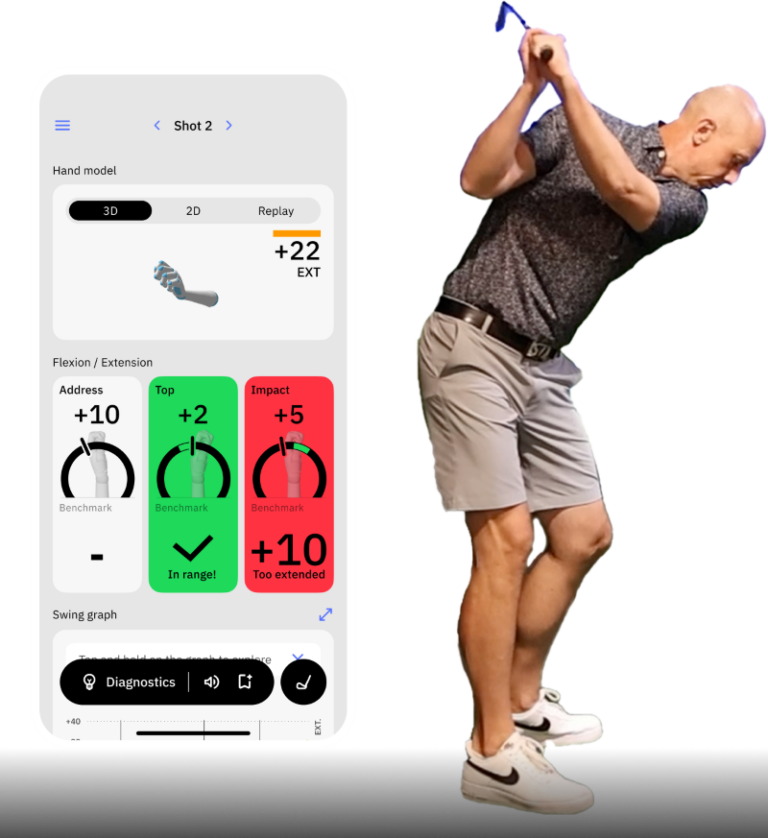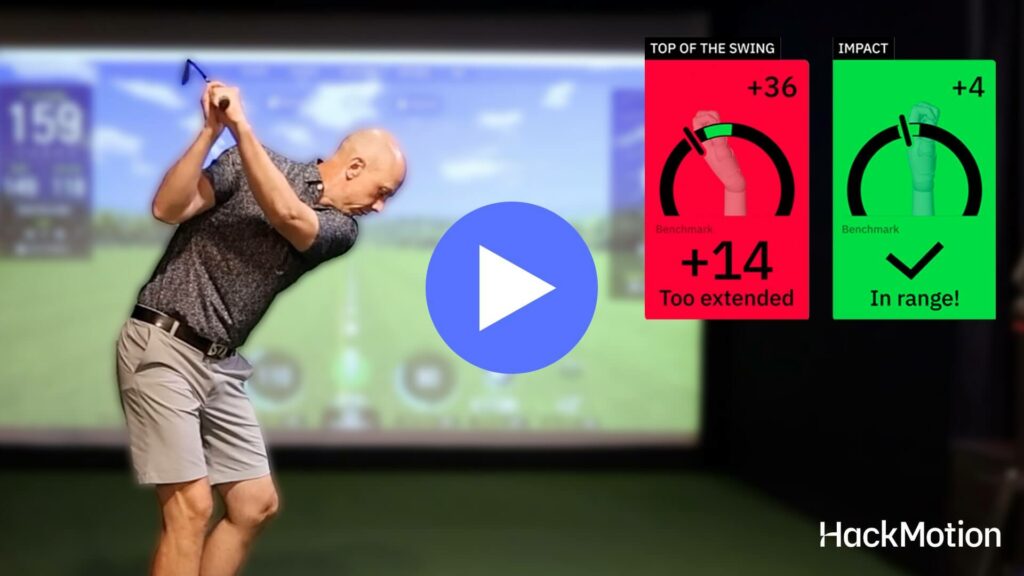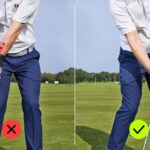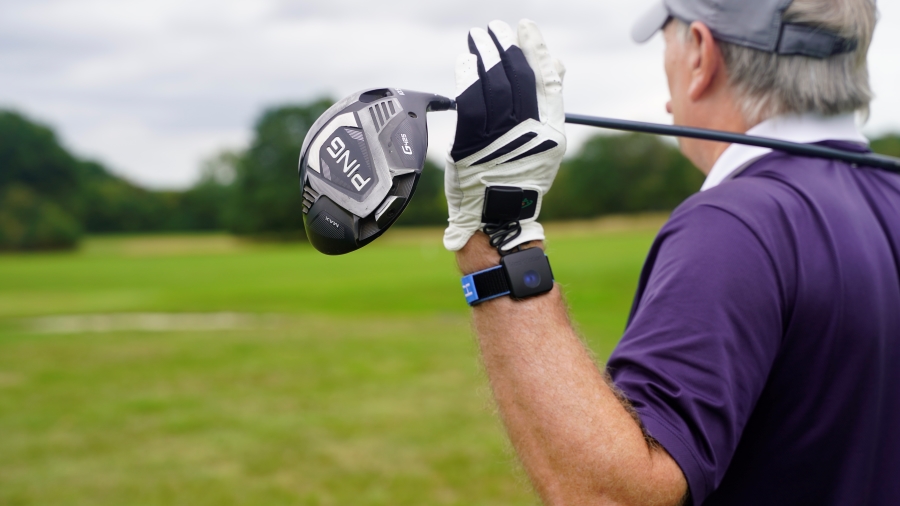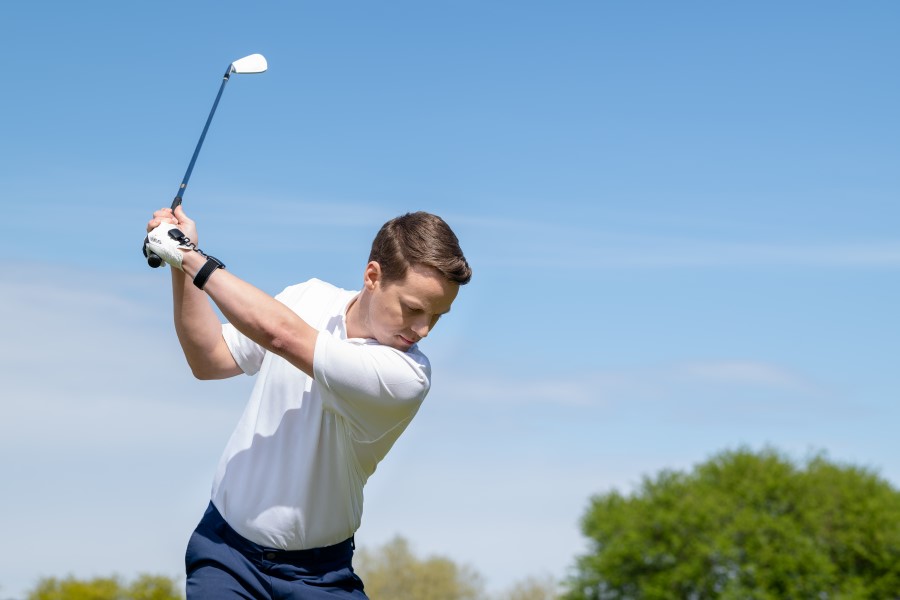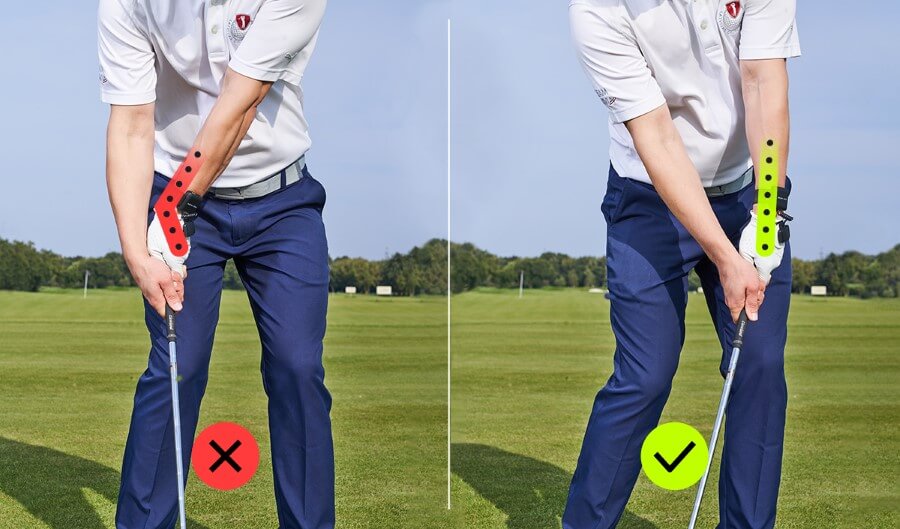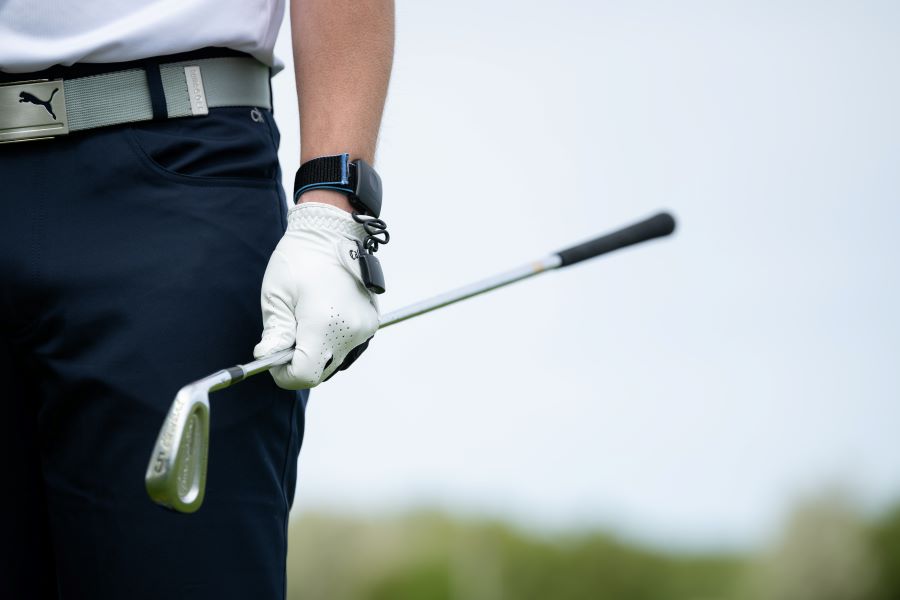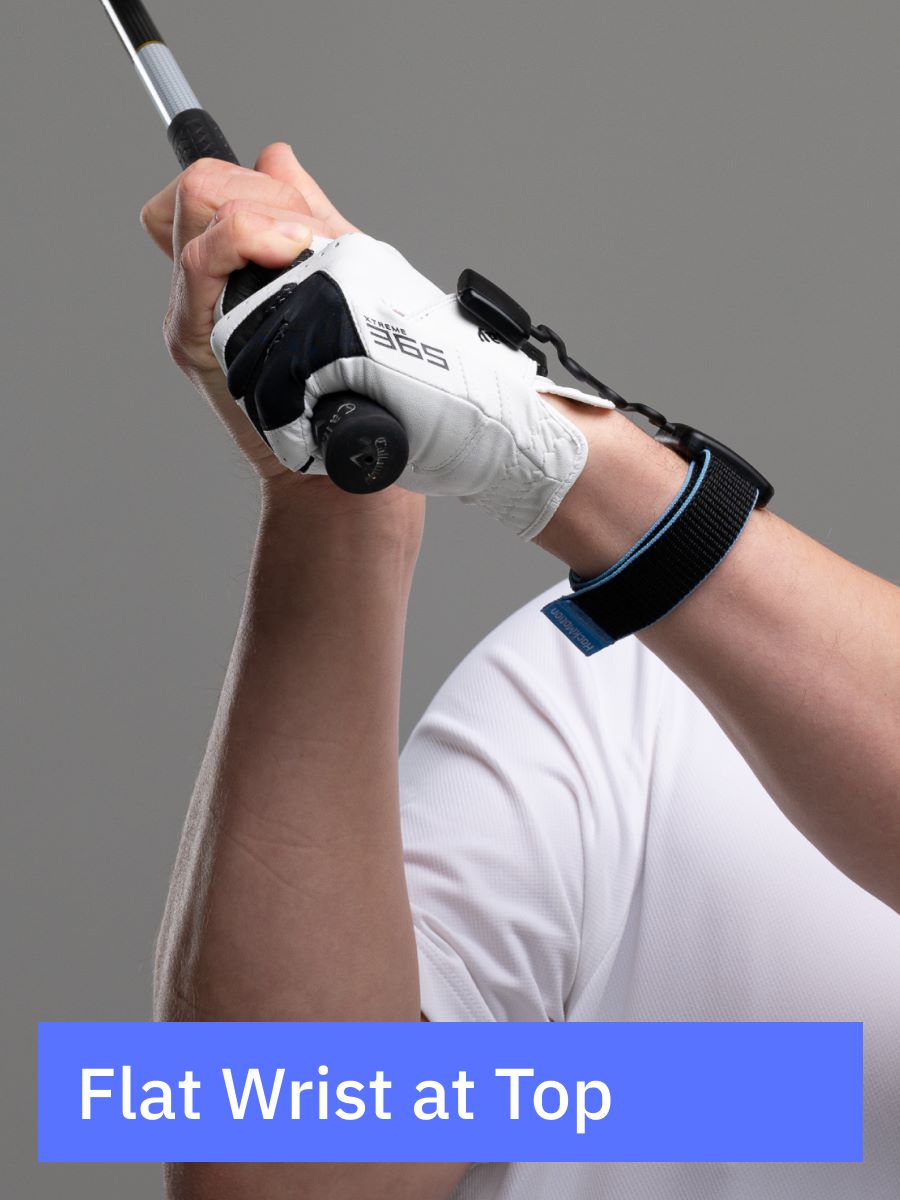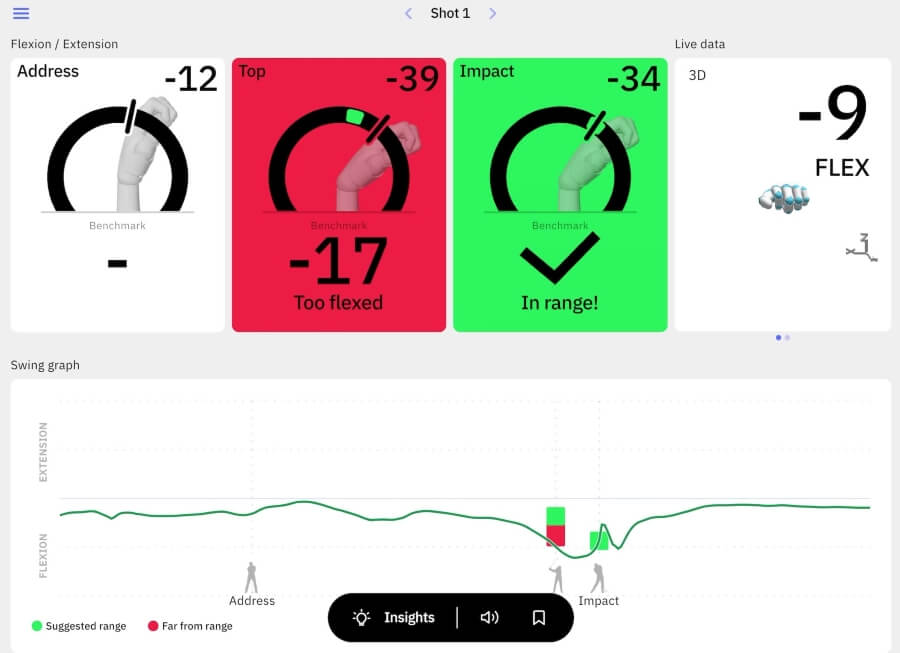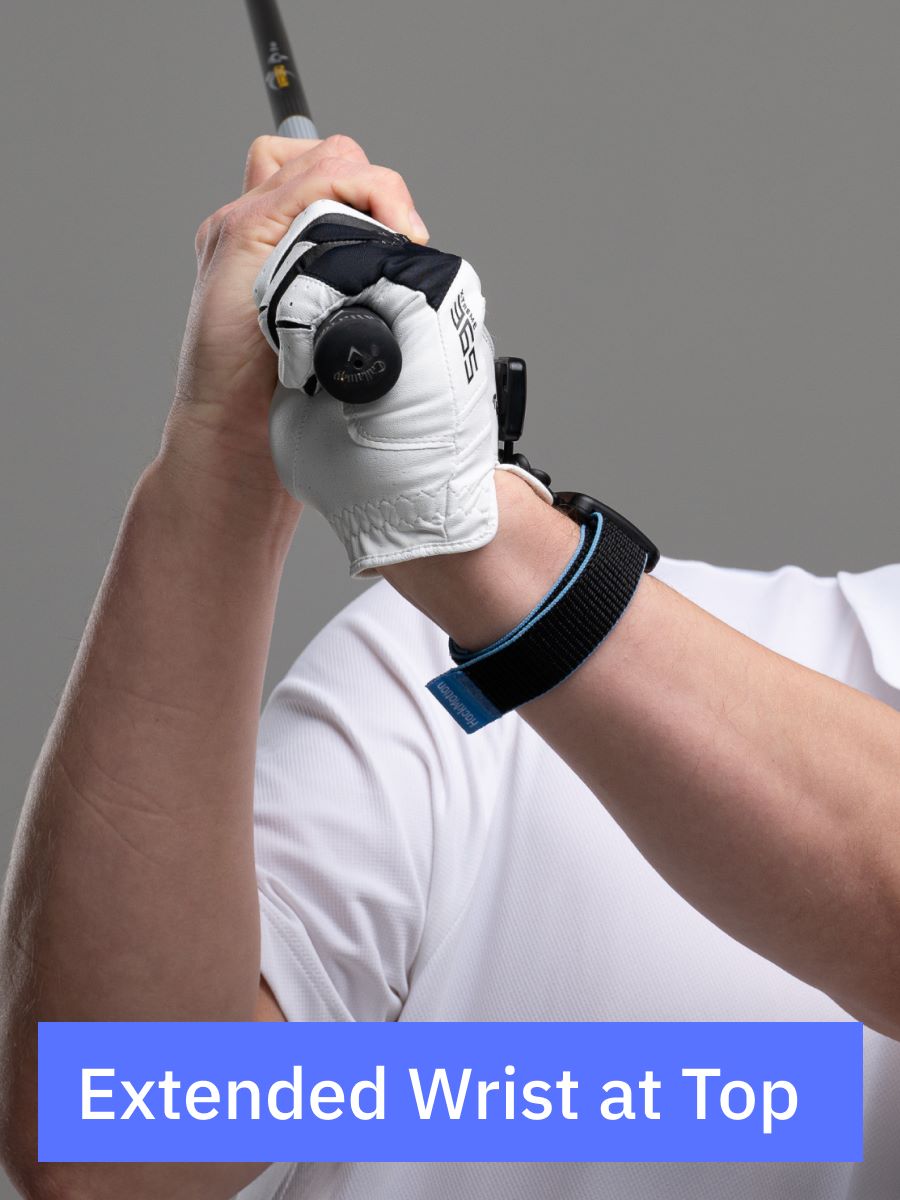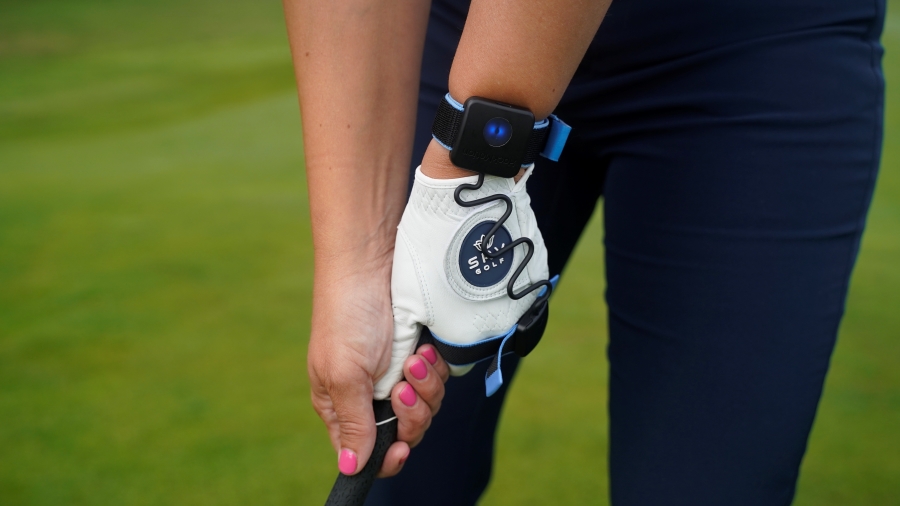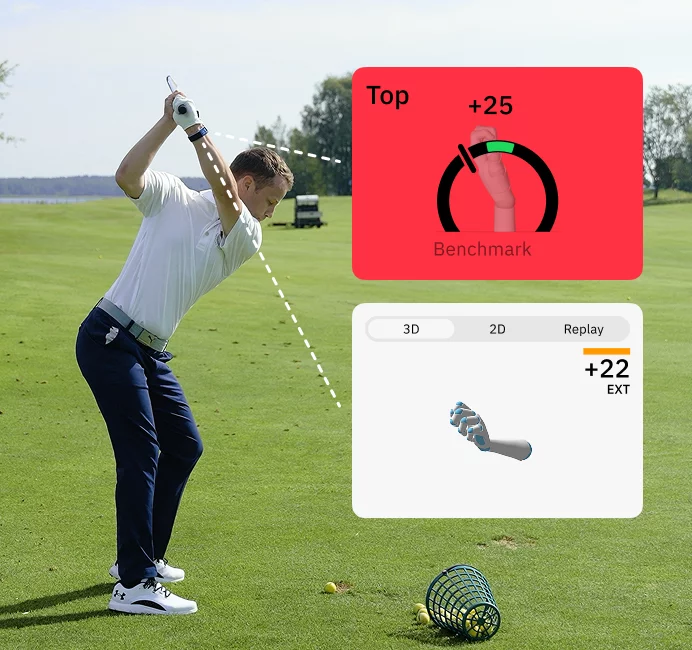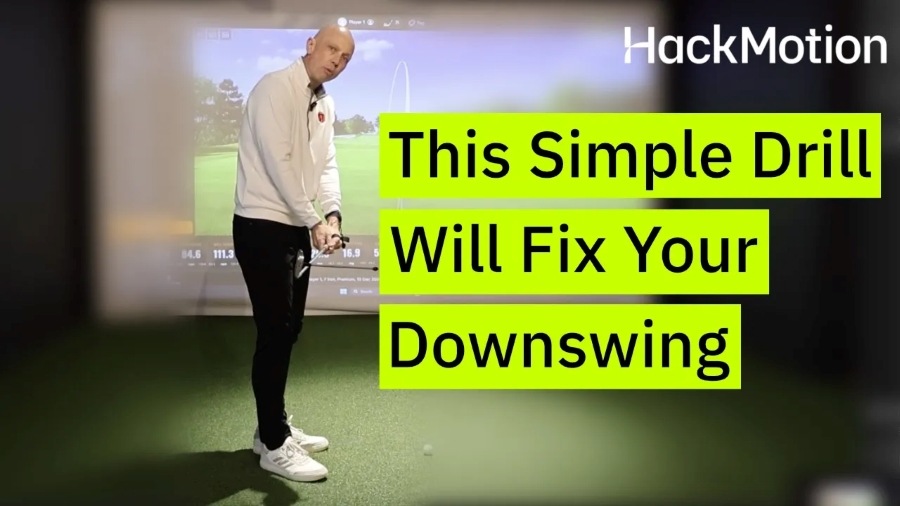How to Hit a Draw or Fade by Fine-Tuning Your Wrist Angles
After analyzing more than 1,000,000 golf swings, we have figured out the exact patterns that help players succeed with consistent ball striking.
If you want to hit it straight, it’s all in the wrists.
What if you don’t want to hit it straight?
Sometimes a draw or a fade is the better option, but remember, most golfers should stick to one stock shot for consistency. Work on shaping only when the situation calls for it (like curving around a tree or accessing a tucked pin).
The proper wrist action and angles in your golf game can help you hit draw and fade shots on demand. If your golf game is ready for this type of improvement in skill, you are in the right place. Let’s take a look at the wrist action needed to hit a draw or a fade.
Key Takeaways
- Clubface control is king: ~80% of start direction comes from face angle at impact, and your wrists control that.
- To hit a fade: use more lead-wrist extension (cup) + radial deviation (cock).
- To hit a draw: use more lead-wrist flexion (bow) + ulnar deviation (downward hinge).
- Setup tweaks matter: ball forward/shaft vertical/handle low for fades; ball back/shaft forward/handle high for draws.
- Use HackMotion to measure and repeat the exact wrist ranges that match your intended shot shape.
Prefer watching over reading? Watch Rob Cheney break it down step-by-step and show you how adjusting wrist angles can help you shape shots with confidence.
Contents
How does Wrist Action Influence a Draw or Fade
There are three ways in which the wrist moves throughout the golf swing
The bowing and cupping of the wrist (extension/flexion) is the most important and the one that all amateur golfers should have some understanding of.
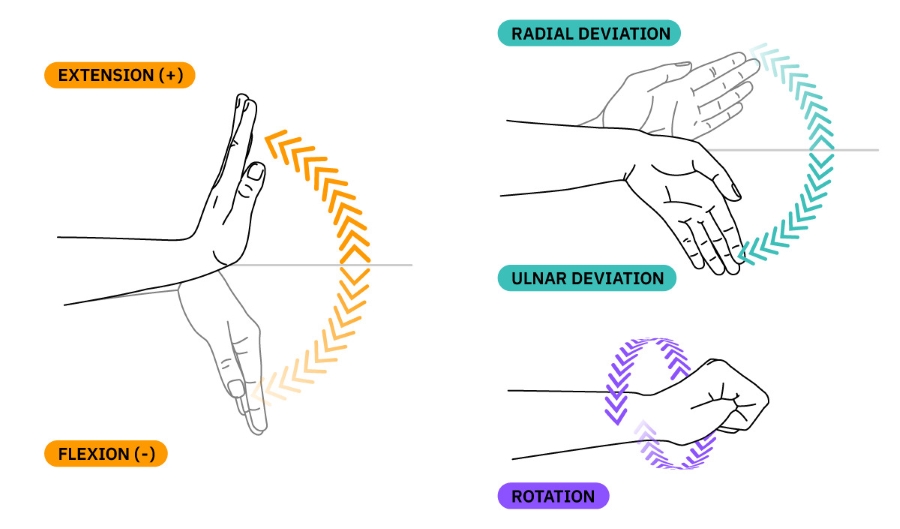
Wrist Flexion/Extension at Impact
To understand flexion/extension, consider the face of a watch worn on your lead wrist.
When your lead wrist is flexed at impact it is pushed away from your watch. When it’s extended at impact, it’s angled up or cupped closer to the watch face.
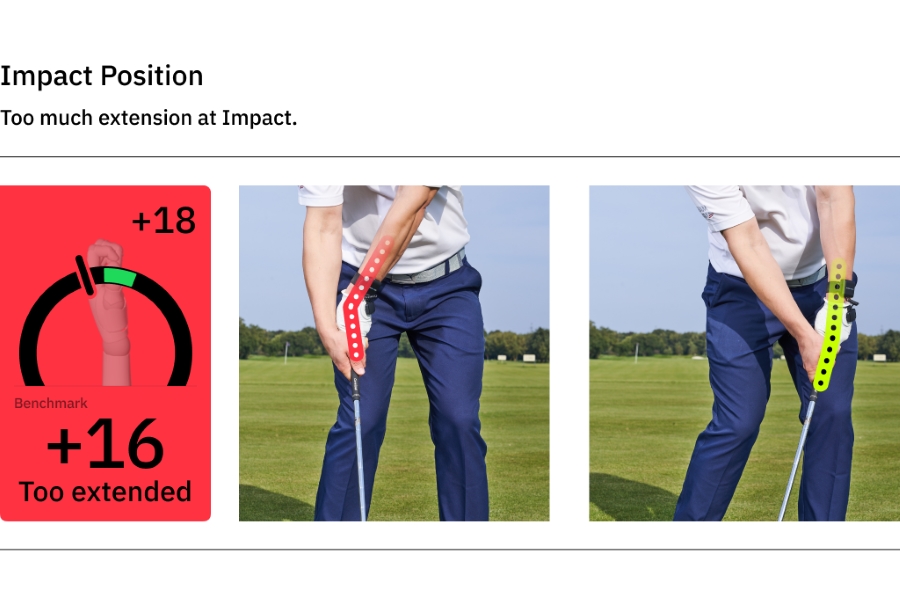
The proper lead wrist position will determine where the ball goes at impact (straight, left, right).
- For a fade, the lead wrist should have a little more extension, paired with a bit more radial deviation. This position opens the clubface to the swing path and allows for that slight left-to-right turn.
- For a draw, the wrist should be more flexed or bowed, paired with a touch of ulnar deviation. The slightly closed clubface position causes the right-to-left turn and draw spin.
Radial Deviation – Cocking of the Wrists
Flexion and extension are, without a doubt, the best place to start when working on hitting draws and fades.
However, it’s also important to understand that the amount of radial deviation or wrist cock you have in the backswing can impact your ability to control ball flight.
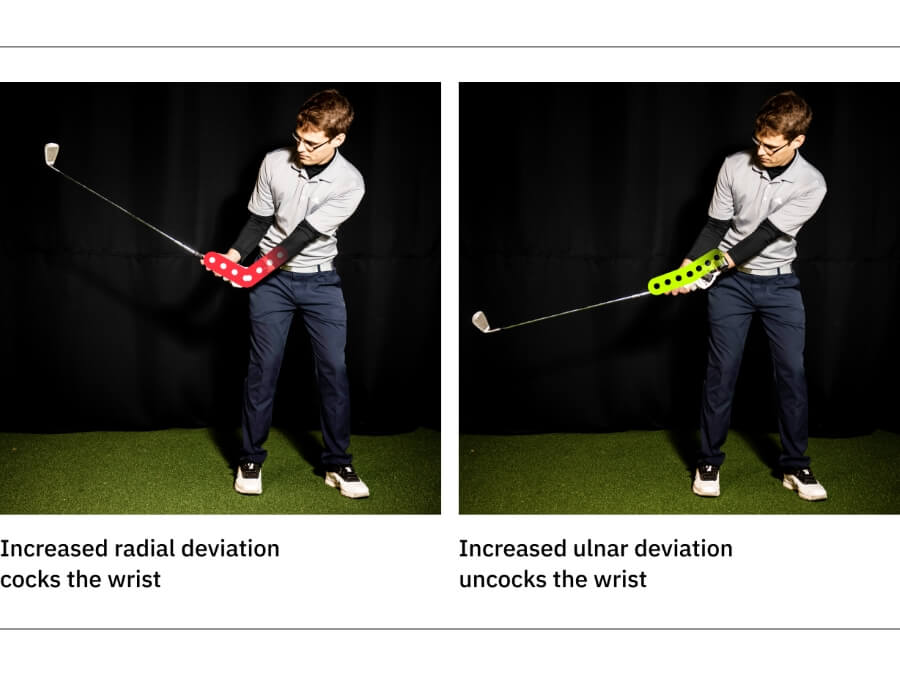
With too much wrist cock the clubface will typically be left open at impact.
Try right now to take the club back and cock the wrists. Notice how much closer the back of the lead hand is getting to your watch face?
That extra radial deviation adds extension, and we know that added extension opens the clubface at impact.
Rotation (Pronation/Supination)
The final piece to this puzzle is the rotation. Rotation of the wrist is referred to as pronation/supination. It’s easiest to understand this by thinking more about forearm rotation, not just the wrists’ rotation.
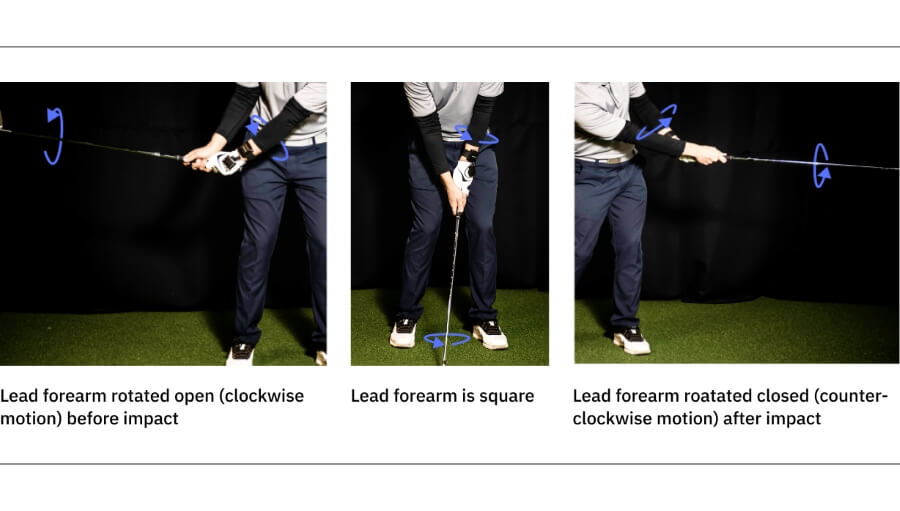
The better you get at rotating the wrists through impact, the easier it is to hit a draw. If you ease up on that rotation a bit, you’ll leave the clubface more open and make it easier to hit a fade.
Again, start with extension and flexion to help you control the ball flight of your shots.
Steps to Hit a Draw
Now that you understand how the wrists work, if you want to learn to shape your shots, here are the steps to hit a draw.
The amount the ball draws will depend on the positions you take, so you’ll likely have to experiment to get it right.
Close Your Stance
When hitting a draw, the more subtle the adjustments you can make, the better the chance you have of doing this consistently. Start by aligning your feet and shoulders so they are slightly to the right of your target.
The closing of the stance to the target should accommodate a more inward path on the backswing and a ball flight that will head to the right of the target and come back in.
Make Sure You are Standing Far Enough From the Ball
Don’t crowd the ball when hitting a draw shot. If you do, you will find your swing path is more steep, making it hard to get draw ball flight.
Flex Lead Wrist in Downswing
The key move here is to start the downswing by feeling more flexion or bowing of the lead wrist. This will ensure that when you get to impact your clubface is a little closed.
The best drill to do this is the motorcycle drill.
Just as you would rev a motorcycle, the lead wrist moves more towards flexion. Pretend the golf club is the handlebar of the motorcycle and rev it as you move towards impact.
Play around with how much bowing and flexion you need to get the draw ball flight you desire.
Swing Out Towards Target
Finally, as you are swinging down through the ball with this added flexion in your lead wrist, go ahead and swing out towards the target.
If you do this, you’ll be sure to start right of the target, and the closed clubface will bring the ball back toward the center.
Keep the handle of the club slightly more forward and up at impact. This adds shaft lean and helps ensure the face closes properly for a draw.
Steps to Hit a Fade
To hit a fade, you’ll take some of the same steps, but they will be reversed. Again, if you push this too far, you’ll start hitting a slice, so you have to adjust.
Open the Stance
Set up with your feet and shoulders aiming to the left of the target. This will help in creating a slightly more out-to-in swing path and leaving the clubface just slightly open to the path when you swing through.
Don’t exaggerate this position; it’s very easy for a fade to turn into a slice.
Add Setup Tweaks
- Move the ball slightly forward in your stance.
- Let the shaft sit more vertical (less forward lean).
- Drop the handle slightly lower so the toe of the club is just off the ground.
These changes help preserve the face to stay open relative to the path.
Measure Wrist Angle to Determine Extension
A slight cupping of the lead wrist will help you hit a fade.
Here’s the good news: most golfers already have a cupped lead wrist at the top of their backswing. When you want to hit the fade, simply don’t move toward flexion as much as you normally try to.
Take some swings where you look back at your wrist position and then follow it down slowly to the ball to see the clubface angle. Also, wear your HackMotion and determine how much extension you have at the top.
To hit a controlled fade, you won’t want extreme levels of extension in the lead wrist, just enough to leave it open at impact.
Don’t Hesitate Through Impact
One of the biggest mistakes we see golfers make when trying to hit a fade is to get nervous through impact with face manipulation.
To hit a good fade, you will still need your speed. This is what ensures you don’t lose distance as well.
As long as your stance is not too open and you have not exaggerated the slightly outside swing path, then you should have no problem keeping that slight bit of extension in the wrist and hitting a perfect fade shot.
How to Work on Your Wrist Control
You have all the tools you need to hit draws and fades by manipulating your wrists.
Here are some of the ways you can work on this process.
- Use HackMotion audio feedback to set a range for your wrist angles, try to repeat it, and track your progress over time.
- Start with waist-high to waist-high golf swings where you are feeling the lead wrist either more flexed or more bowed; if you can narrow this down, start taking the club back further.
- Stop at the top of your backswing and check into the position of the lead wrist; how much work has to be done on the downswing to get to the desired impact position?
- Finally, use HackMotion to determine the consistency of your golf grip; great players have a consistent grip, typically a little stronger to hit a draw and a little weaker to hit a fade.
Final Thoughts
Learning to control your wrists to hit a fade or a draw is not the only benefit you will get. When you can hit a fade or a draw on command, your ability to fix a slice or a hook is greatly improved.
Just keep in mind your best golf will usually come from one stock shot. Use these adjustments when you need to work the ball around an obstacle, but rely on HackMotion to help you groove consistent wrist angles for your go-to shape.
Too many golfers are playing the game, believing they have no control over where the ball ends up. This isn’t the case! It’s all in the wrists.
